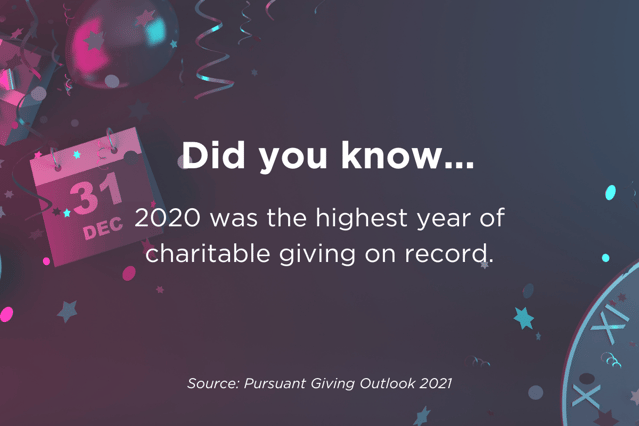The Ultimate Guide to Year-End Fundraising for Nonprofits | Analyze & Take the Next Steps
This is the third post in a series about year-end giving. Read part one and part two.
The holidays can be a busy time both professionally and personally, so you and your teammates may be tempted to slow-walk an evaluation of your year-end fundraising after it ends, but don’t put it off for too long. You want to conduct your analysis while the campaign is still fresh in your mind, so you might want to schedule a debriefing in advance to ensure it’s on everyone’s calendars soon after the campaign ends.
The debriefing should be attended by all affected stakeholders, such as your development team, communications staff, and analytics department. The latter will most likely present the results of your year-end fundraising, which will be based on the metrics — targeted revenue, number of new donors, etc. — agreed upon at the outset of the campaign.

Yet, while they form the basis of the campaign, the results aren’t the only topics to discuss. How did your chosen tools perform? Did you have enough staff assigned to the effort? What procedural changes could improve next year’s fundraising, and are there lessons from the most recent effort that could be applied to fundraising initiatives at other points during the year?
If your year-end fundraising ends on a high note, trumpet the results publicly to further engage donors. Share in the success of your year-end giving together and communicate an immediate win that suggests broad constituent support and approval.
Convert Year-End Donors Into Lifelong Supporters
You don’t have to wait another twelve months to engage your year-end donors. Their contributions can propel your next outreach; in fact, you can plan to tack on several weeks of communications after the holiday season. For new donors, for example, you can send a series of emails that welcome them to the organization, introduce its various programs, invite them to volunteer, and so on — there’s plenty of content to mine, and if they donate again, you can tag them to receive regular updates and touches. Note, too, if there was a particular area of service — an email about your beach clean-up activities, say, or your financial literacy workshops — that prompted their donation because it helps round out your profile of who they are and what compels their generosity.
Dig Deeper: Listen to our conversation with sustaining giving expert Erica Waasdorp.
For your most faithful donors, send communications that keep them inspired by your story. Share updates of the impact your programs have had on issues or communities they care about, for example. And if you need to request additional support, seek a monthly sustaining gift.
Your efforts will be best boosted by an analytics platform like GivingDNA, which sheds light on donors’ and constituents’ past giving patterns. It also acts as a valuable source of information for how you might reach both potential and existing donors, as well as what you can ask. Schedule a demo today to learn how your fundraising may be best supported by Pursuant’s GivingDNA platform and the agency’s array of additional services.
Additional Resources
Ensure the success of your year-end fundraising with these free resources from Pursuant.
Powerful Questions to Ask Your Major Donor Prospects
Present a timely and relevant case for support for every donor.
Donor Loyalty Benchmarking Study
Quickly connect donors to impact results post-campaign.
